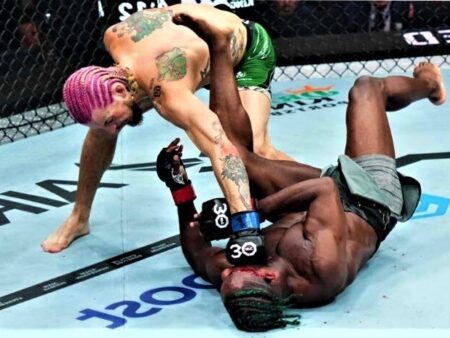The world of professional hockey is a relentless arena, not just for the athletes battling on the ice, but perhaps even more so for the orchestrators behind the scenes: the general managers. These individuals are the architects of dynasties, the navigators of salary caps, and ultimately, the bearers of hope or despair for millions of fans. As the 2025-26 NHL season looms, a select few GMs find themselves under a spotlight so intense it could melt the Zamboni ice. Their decisions, both past and imminent, carry the crushing weight of expectation, legacy, and the ever-elusive Stanley Cup.
New Beginnings, Old Demands: The Utah Mammoth`s Inaugural Expectations
Imagine the task: you’re handed a franchise, an entire roster, and a new city to call home, all in one whirlwind summer. This was the reality for Bill Armstrong, General Manager of the newly christened Utah Mammoth. The novelty of bringing NHL hockey to Salt Lake City provided a temporary shield from immediate performance scrutiny in their debut year. The team`s initial impression was positive, igniting fan enthusiasm even without a playoff berth. However, the honeymoon phase, much like a quick power play, is fleeting.
For the 2025-26 season, the narrative shifts dramatically. The name “Mammoth” isn`t just a rebrand; it symbolizes a new era where “rebuild” is a dirty word. Ownership, led by Ryan and Ashley Smith, invested heavily, not just in infrastructure like a state-of-the-art practice facility, but in talent acquisition. Blockbuster trades, such as acquiring JJ Peterka this past summer and Mikhail Sergachev the year prior, signal a clear mandate: contend, and contend now. The momentum is palpable, but capitalizing on it requires a seamless transition from promising fledgling to formidable contender. Armstrong’s challenge is less about building from scratch and more about rapidly ascending to legitimate playoff contention, proving that the ice in Utah isn`t just new, it`s championship-caliber.
The Echoes of Greatness: Pittsburgh`s Delicate Balance
On the opposite end of the spectrum sits Kyle Dubas, General Manager of the Pittsburgh Penguins, facing a pressure arguably more profound than that of a new franchise. His task isn`t about rapid ascent, but a meticulous, agonizing descent – or rather, a “reset” that dares to touch hallowed ground. The Penguins, an organization synonymous with sustained excellence, now stare down a season with projections that are, to put it mildly, quite low.
This isn`t a typical rebuild. This is a roster still graced by a legendary core: Kris Letang, Evgeni Malkin, and of course, Sidney Crosby. These aren`t just players; they are cornerstones, icons who have delivered multiple Stanley Cups. The pressure on Dubas isn`t simply to win, which seems a distant prospect, but to navigate the twilight of an era with unprecedented sensitivity. The specter of a “frittered away” season for these foundational talents looms large. Even more daunting is the whisper that has grown into a murmur: the potential trade of Sidney Crosby.
To contemplate moving a player of Crosby`s stature, a generational talent who has defined a franchise for nearly two decades, is an unenviable position for any GM. It`s a decision fraught with emotional weight, fan outcry, and the potential to reshape the very identity of the team for generations. Dubas isn`t just managing contracts and cap space; he`s managing history, loyalty, and the inevitable passage of time. It`s a chess game where every move has monumental consequences, and the board is constantly under scrutiny.
The Broader Landscape of GM Gambit
While Armstrong and Dubas face singularly acute pressures, their situations serve as potent reminders of the constant, multifaceted strain on every NHL general manager. Beyond the specific circumstances of relocation or legacy, GMs grapple with a relentless gauntlet of challenges:
- Salary Cap Tightrope: Navigating the intricate financial gymnastics of the salary cap, ensuring competitive talent without handcuffing future flexibility.
- Drafting Fortunes: The high-stakes gamble of the NHL Entry Draft, where one pick can define a franchise`s decade or become a monument to missed opportunity.
- Free Agency Frenzy: The annual sprint to sign impactful free agents, often overpaying for talent in a desperate bid for immediate improvement.
- Fanatic Expectations: The insatiable demands of a passionate fanbase, who oscillate between irrational optimism and instant condemnation.
- Media Microscope: Every trade, signing, and press conference is dissected under a high-powered microscope, with pundits and analysts ready to declare success or catastrophic failure within hours.
- Job Security Roulette: Ultimately, the GM`s chair is a notoriously unstable one, with the axe often falling after just a few seasons without significant progress.
The 2025-26 season, like all others, will be a testament to the resilience, foresight, and occasional sheer audacity of these unseen architects. They operate in a world where “winning it all” is the only acceptable outcome, and the road to that goal is paved with impossible decisions and unforgiving scrutiny. It`s a job where success is celebrated momentarily, but failure is etched in infamy. Welcome to the NHL, where the pressure cooker is always on, and for some, it’s reaching a boiling point.








